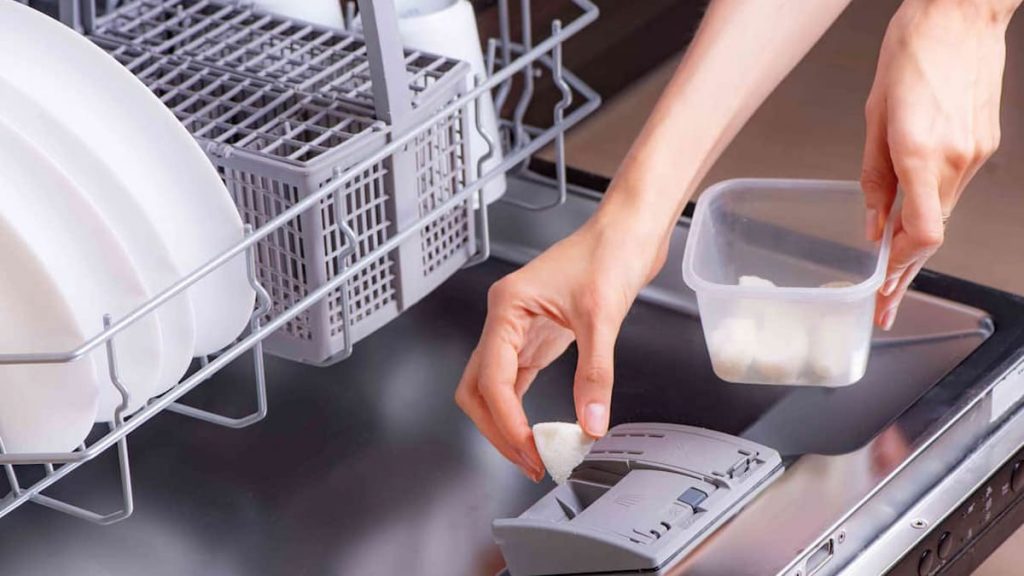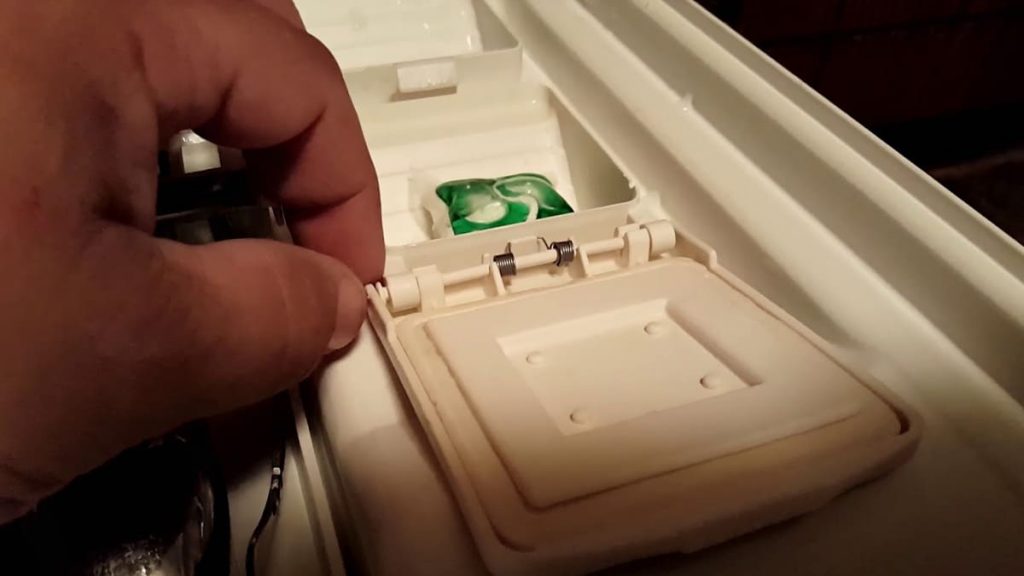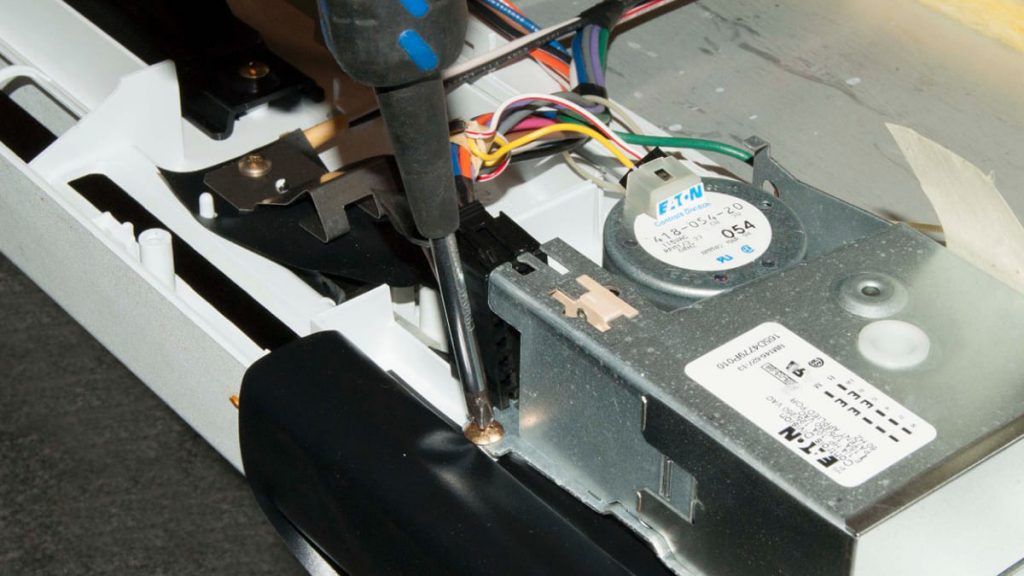Modern dishwashers are equipped with a large number of options. Additional functionality makes washing dishes convenient and of high quality. However, like any technology, the device can fail. For example, such a small part as a detergent dispenser may break, and then the device will cease to perform its main function.
A dispenser is also called a dispenser. It can break for a number of serious and simple reasons. The item controls the consumption of soap and is located on the door inside the machine.
Hardened soap
Hardened soap is perhaps the most common reason why a dispenser stops working. It is obvious that the dispenser is in constant contact with the detergent and the remaining liquid, drying out, seals the inside of the dispenser.
Many modern dishwashers have the function of spraying water into the dispenser to remove soap residue. The problem with dried soapy liquid often occurs with older models of appliances, because their design is designed in a different way. Fortunately, this problem is easily solved.
To remove the remnants of dried soap, you need to moisten a cloth and wipe the walls of the dispenser. To prevent the re-formation of plaque, we advise you to clean the dispenser regularly and do not mix different types of washing liquids with each other.
Broken door spring
There is a small spring in the dispenser door. It is necessary in order to open the door when required. During the washing process, the drive opens twice: for dispensing soap, and then for dispensing rinse aid. When closed, the spring creates tension and forces the door to open with force. If the spring fails, then no voltage is created, which means that the door may not open at the right time. The same thing happens if the hinge pin breaks. The malfunction can be eliminated by replacing broken elements with new ones.
The dispenser door latch is broken
The door latch keeps the dispenser door closed until a signal is given to dispense detergent. Unfortunately, over time, the operation of the device, this part may break down and cease to perform its functions. Breakage occurs due to the accumulation of soap or food debris.
To determine the severity of the breakdown, you must follow the instructions:
- inspect the latch for dirt;
- check if there are signs of damage on the parts;
- determine whether all elements are in their places.
Perhaps some part of the latch is bent or deformed. Parts can break on their own as a result of normal wear and tear. Most often, plastic latches fail because they become brittle with regular exposure to water and detergents. The only way to fix a part is to completely replace it.
Broken wax motor
During operation of the dishwasher, the drive opens twice. In addition, it controls the operation of the piston for dosing the detergent supply. Some models of dishwashers are equipped with dispensers with reed switches or optical sensors.
Inside the actuator is wax, which is used to unlock the door latch. When voltage is applied to the actuator, the wax heats up, expands, and then pushes the piston out. It goes to its original position at the moment when the wax cools down.
The motor is connected to a timer to control the timely opening of the door. If it fails, the door will not be able to open, which means that the device will cease to function normally.
To determine the malfunction, it is necessary to carry out diagnostics. To do this, check the engine and separately the timer. First, you need a multimeter. If it shows that the motor is out of order, you will have to replace it with a new one.
Deformed dispenser door
Deformation of the dispenser door is not too serious a problem compared to previous breakdowns. However, it is this malfunction that is most often found in older models of dishwashers. The door is made of plastic and is regularly exposed to high temperatures and humidity. At the same time, aggressive detergents adversely affect the material. As a result, the part wears out, melts or deforms.
A damaged door cannot close normally, as it will not fit the “opening” in size. It will either be stuck in the open or closed position. Either way, the dispenser will stop working normally.
A plastic part that has been deformed cannot be repaired. It must be replaced with a new one yourself. You need to understand that it is not always possible to find missing parts for old dishwashers. You may need to purchase a new appliance.
Broken bimetal latch
Modern dishwashers are equipped with a wax motor, which is based on the melting of wax to push out the piston. Older models, on the contrary, are equipped with bimetallic clamps. These parts are devices that open dispenser doors using electric current.
If the latch does not open, then it is broken or the timer is out of order. In this case, you will need to check the parts for operability with a multimeter.
For security, it is important to follow the algorithm:
- unplug the dishwasher;
- remove the door panel;
- close the dispenser cover;
- press the latch with a screwdriver.
If after that the latch still does not open, then it is necessary to order a new part and replace it.
Broken timer
Dishwashers of all models are equipped with a soap dispenser. In order for the wash cycle to proceed according to the program, the product must be released at a certain moment. The timer helps to recognize it. It activates the lever that opens the dispenser door. If the timer is out of order, the door does not open, which means that the washing of dishes will be of poor quality.
You can figure out the problem yourself. To do this, you need to inspect the lever and the timer, and then make sure that all the elements are in place and not damaged. If any component is damaged, then you need to replace it with a new one.
Loose or damaged rinse aid cover
Many owners of dishwashers fill the dispenser not only with detergent, but also with rinse aid. This substance rinses clean dishes at the end of the cycle. The agent is poured into a special compartment for this. If the compartment cover is damaged or loose, the dishes will not be washed properly.
The deformed part must be replaced. As a rule, the breakage of the cover occurs due to constant exposure to high temperatures and humidity.
It is not necessary to pour rinse aid into the dishwasher. Experts advise using it only if it is necessary to remove heavy soiling from dishes. In other situations, rinsing with plain water is sufficient. It is important not to mix up the tanks and pour the agent into the correct compartment, otherwise the rinse aid will be drained into the chamber after the completion of the work cycle.




